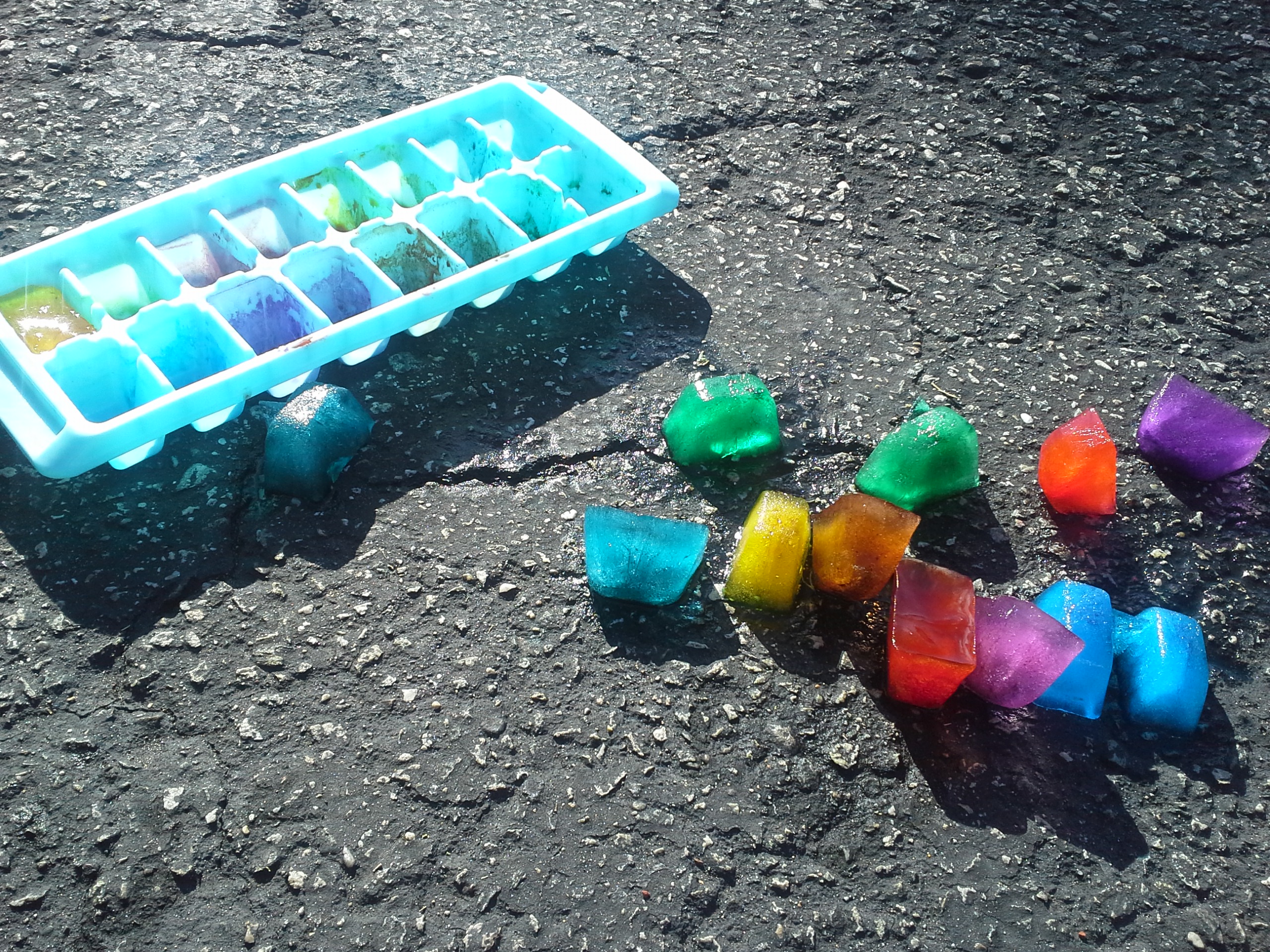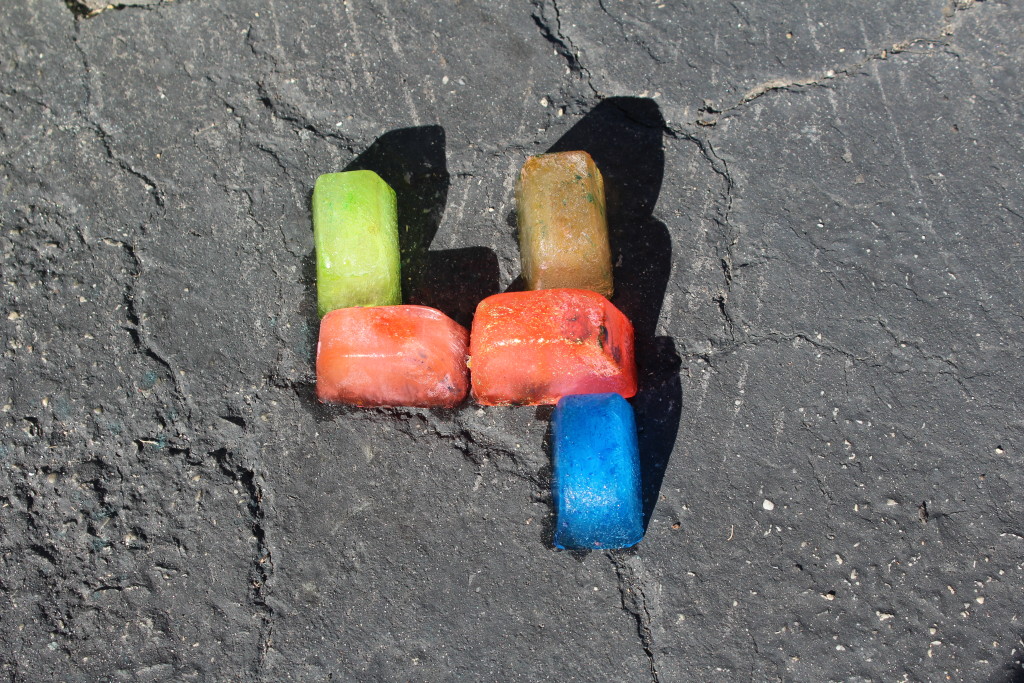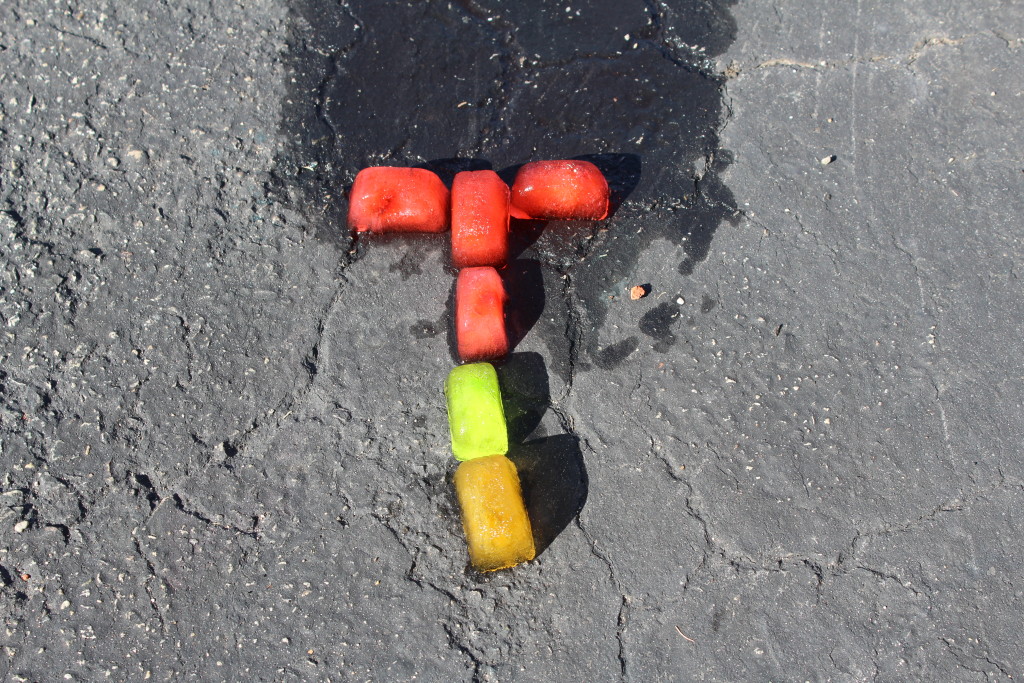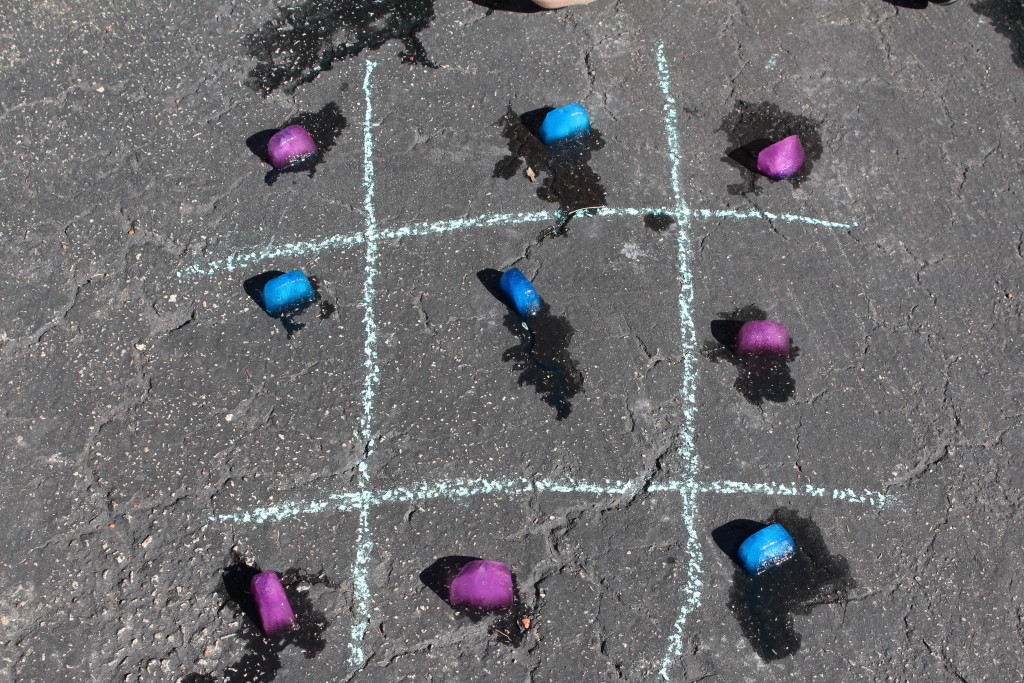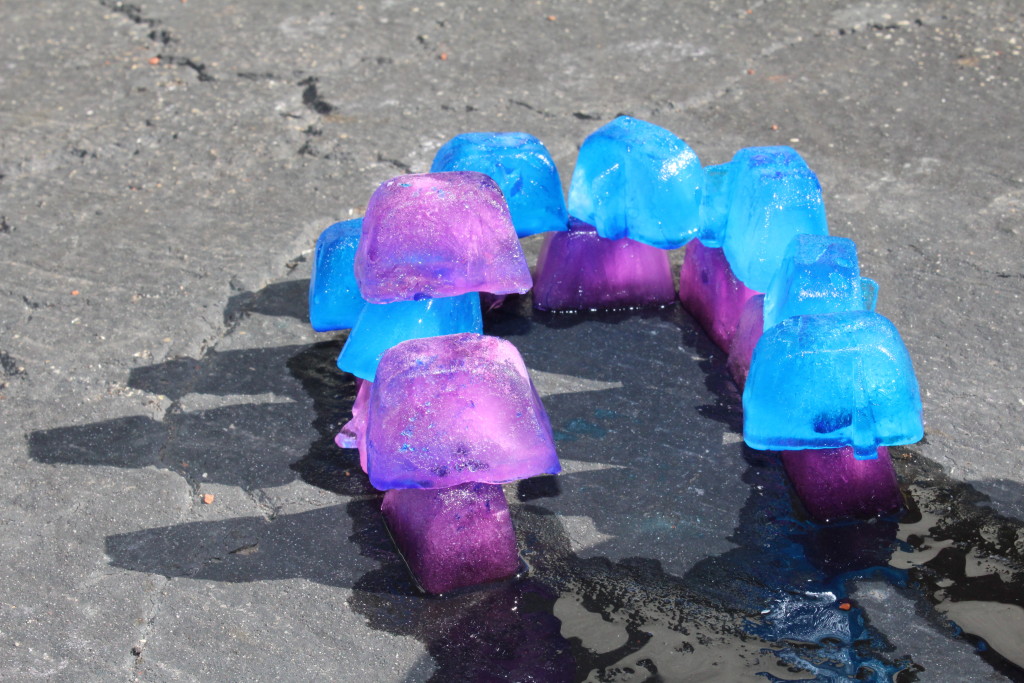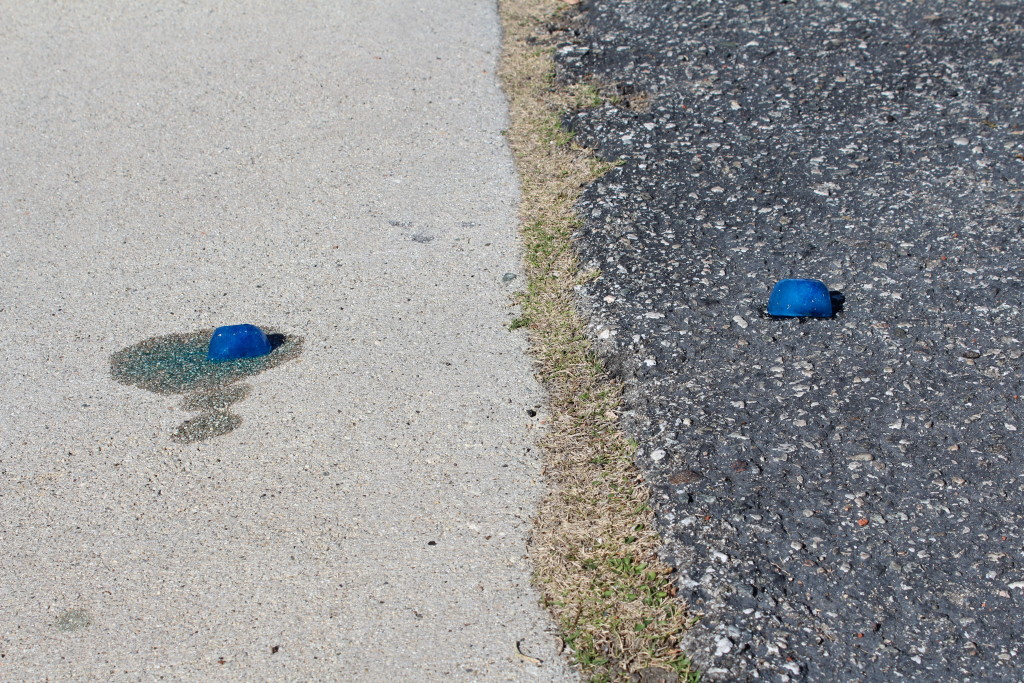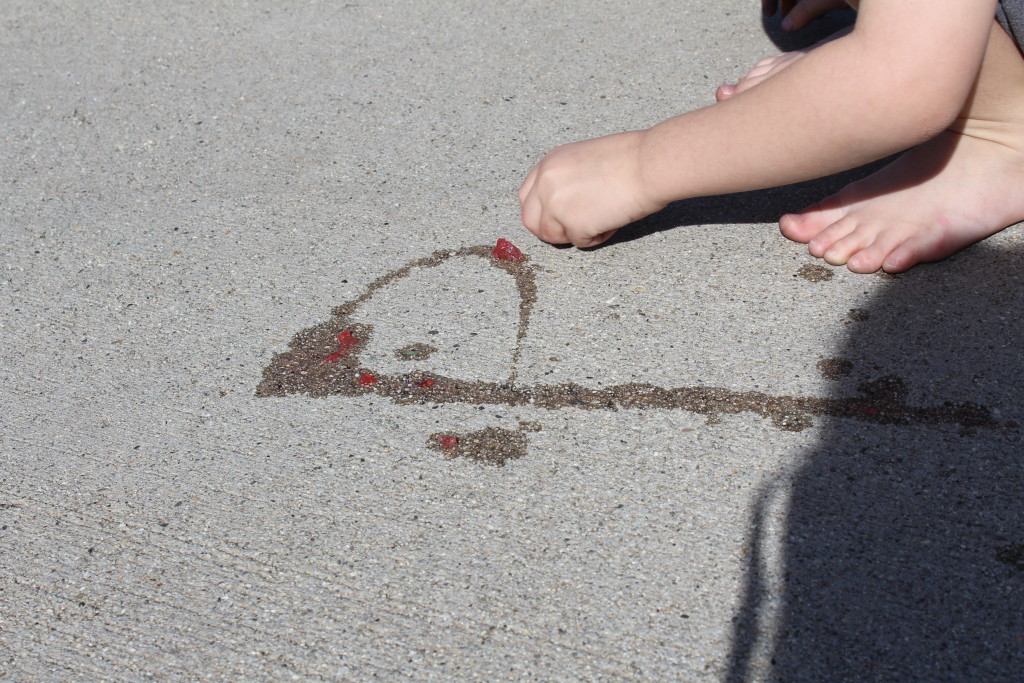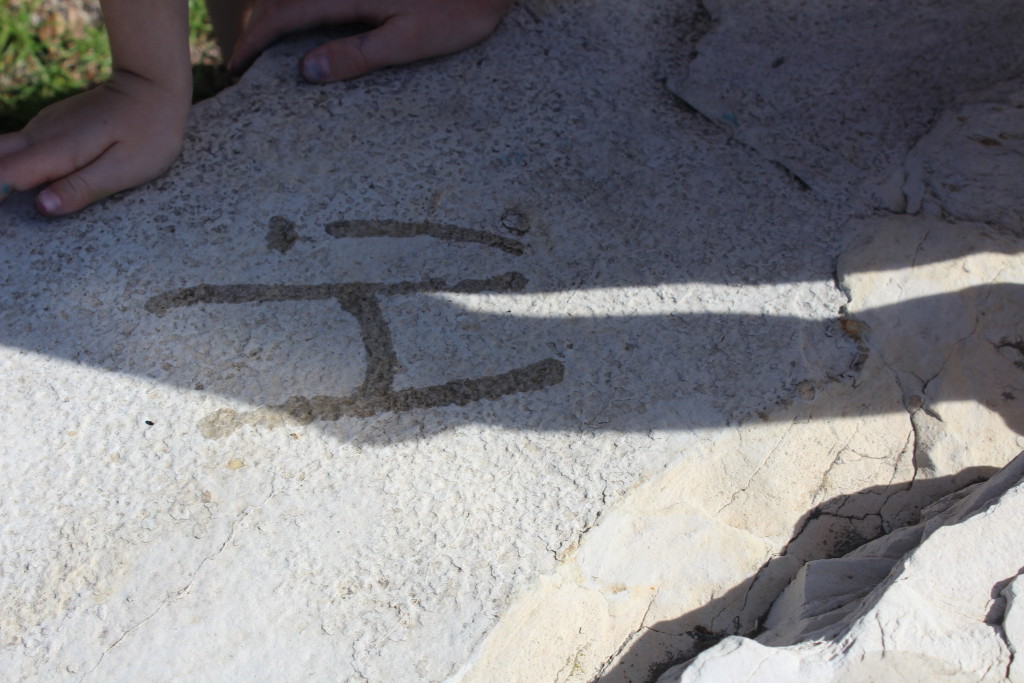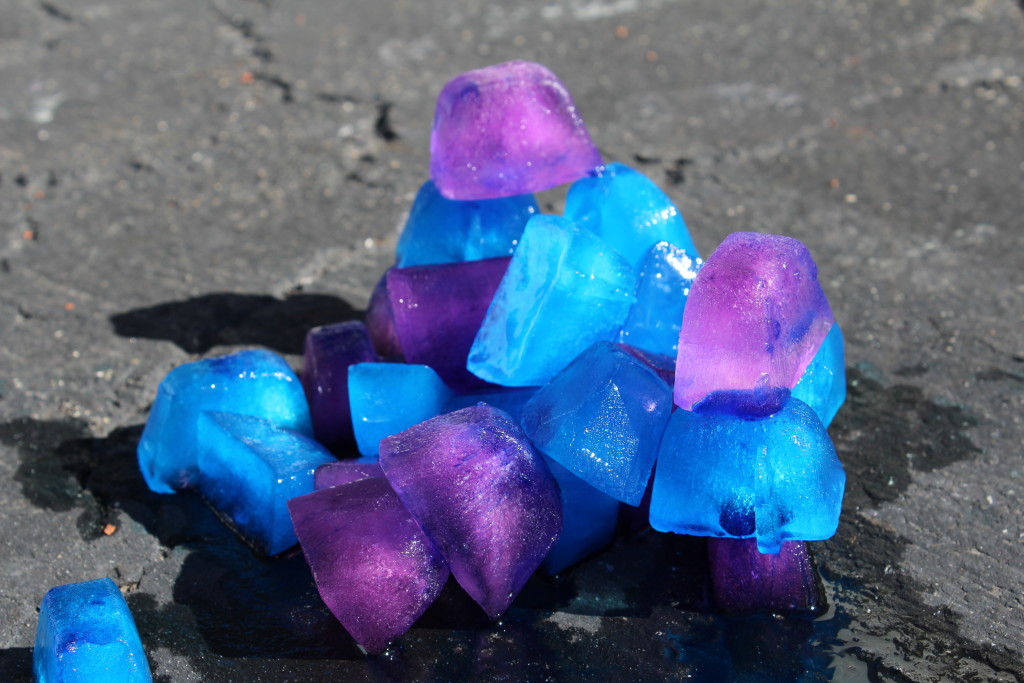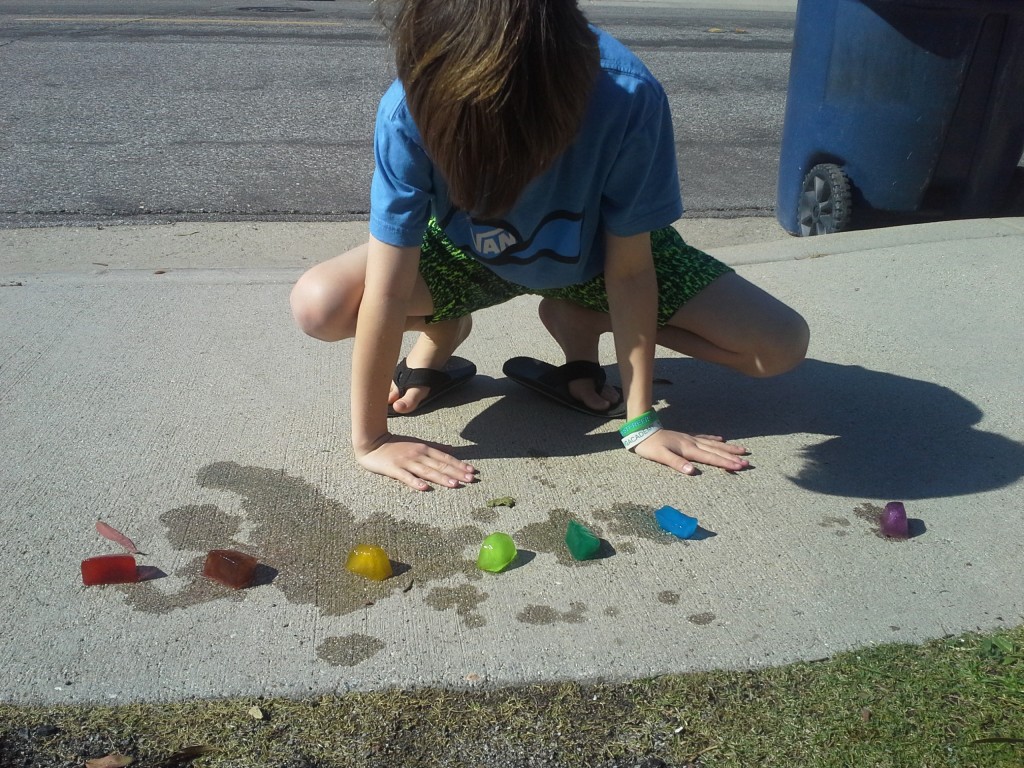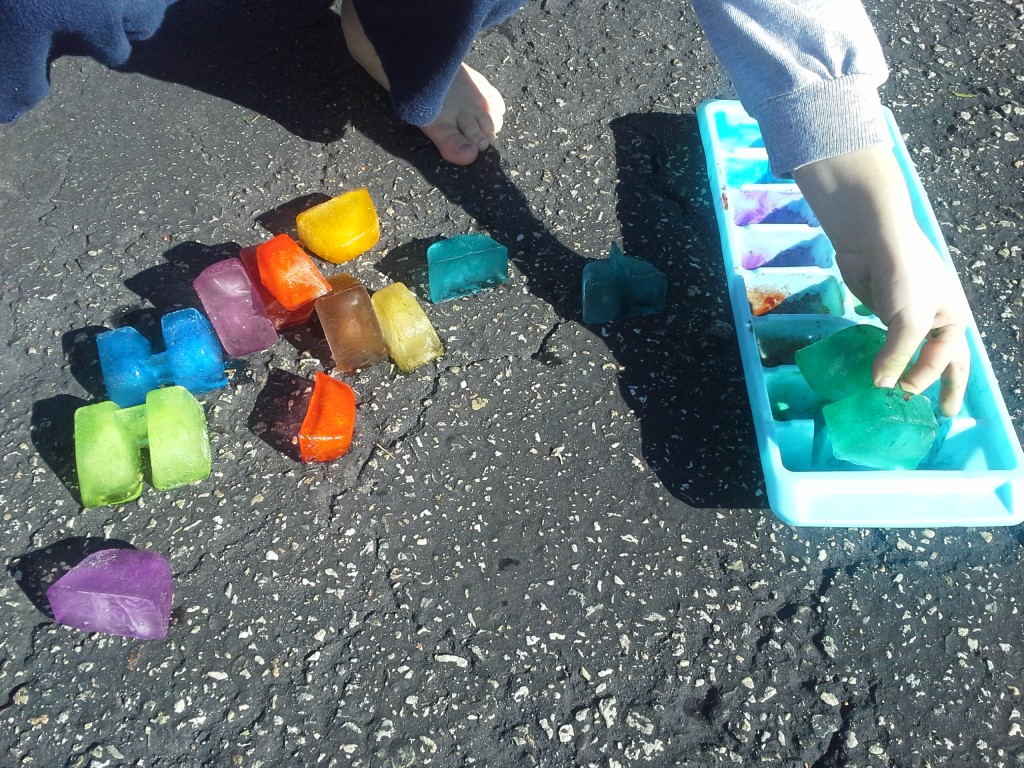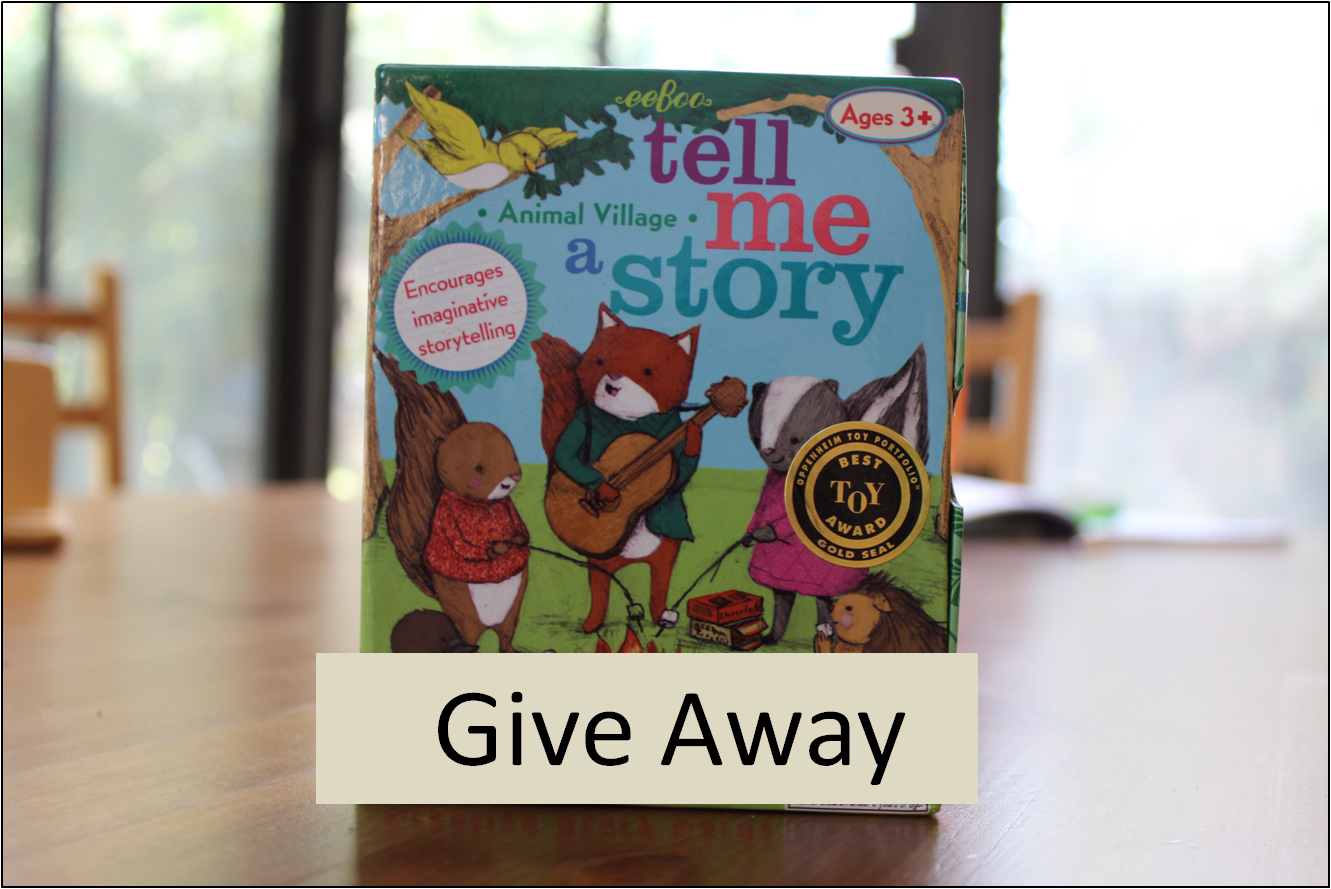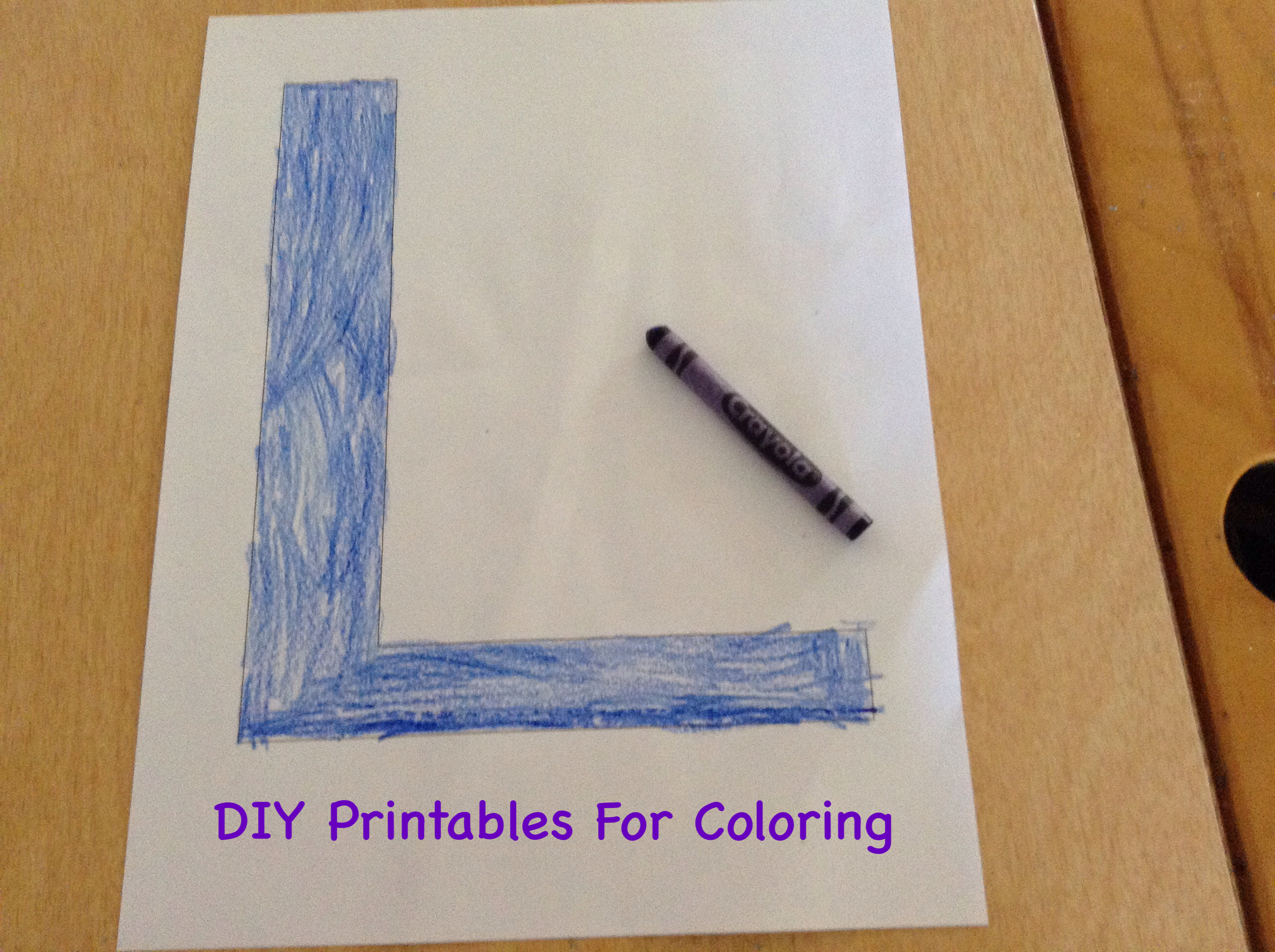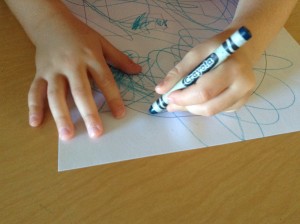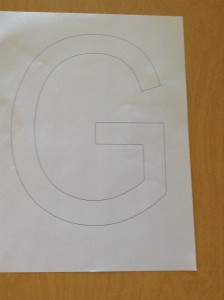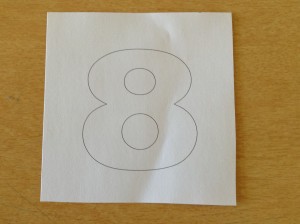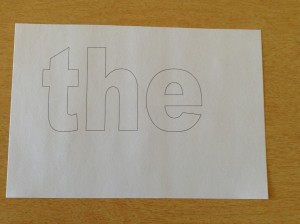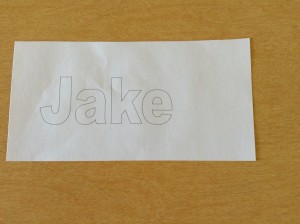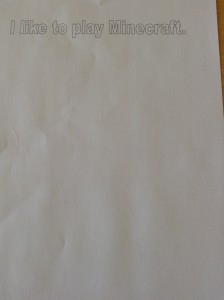Grammar is one of the hardest subjects to teach. It’s not because it’s that difficult to understand, it can be so dry in how it’s presented. My oldest hates anything that has to do with writing and loudly protests or avoids activities that require him to write. Of course, he still has to do some writing, that’s just life, we write stuff. However, if I can find a way to teach him something that would normally require a lot of writing in a way that actually appeals to him instead of make him want to rush through just to be done, I have to get creative. That is how I came up with teaching grammar with the linking cubes. My son is a very hands-on, visual learner so this appealed to him. He also has a penchant for colors, which made this one of his favorite activities. He actually asks to do this! It is one of his favorite things to do.
Materials:
- Linking cube guide (blank or color)
- Sentence strips (or paper)
- Linking cubes
- Sharpie (or marker)
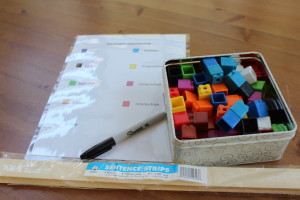
The idea:
First, I color coded each part of speech to a corresponding color in our linking cube set. If your linking cube set contains the same colors as mine, simply print out the color guide. If your set has different colors, print the guide with the blank squares and use crayons or markers to fill in the squares according to the colors of your set. I suggest laminating your guide.
Using this color code, the first thing we used the cubes for was identifying parts of speech. I wrote sentences on a sentence strip and had my son place a cube on top of each word identifying it’s part of speech. Once each word was identified, he linked the cubes together to represent the sentence.
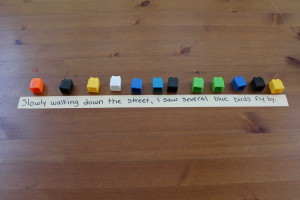
Color coding each word
When we first started this activity, he did not know all of his parts of speech. After a few times doing this activity, he knew them all. I used a simple assessment to determine what parts of speech he already knew. As we worked, I concentrated on discussing/explaining the parts of speech that he did not know yet.
An interesting thing happened as we worked, my son began to notice patterns in the colors, which of course correlate to patterns in the sentences. It was a visual representation of how the words are often found together in sentences. On top of that, some of the words were a little tricky to ascertain it’s part of speech. Naturally, many words can be more than one part of speech depending on how it is used in the sentence. It’s not also so cut and dry, he really had to think! This led us to research certain words and understand the grammatical uses of the word to help us determine what part of speech it was in that particular sentence. By doing this, we got into some great discussions. I never thought I was be discussing grammar so critically with a nine year old!
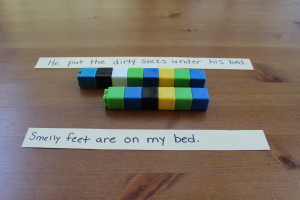
Noticing patterns
Once my son learned all nine parts of speech, we turned our focus to other aspects of grammar, such as prepositional phrases, compound sentences, etc.
To illustrate a prepositional phrase, he first determined the part of speech for each word in the sentence and put down the corresponding cube. Next, he had to find the preposition and figure out which words were working together to make the prepositional phrase. Once the words were identified, he linked just the prepositional phrase to show the relationship of the words. At first, this was new to him so we worked together. It only took one example, and he was able to do this independently with new sentences.
Example:
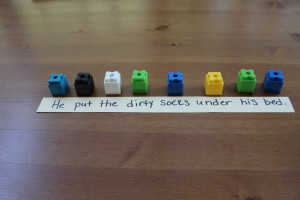
Color coding each word
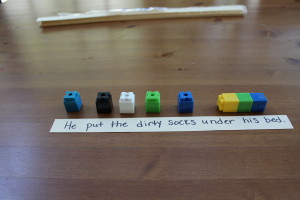
Linking the prepositional phrase
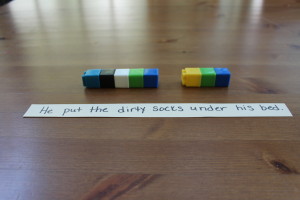
Combing the beginning of the sentence
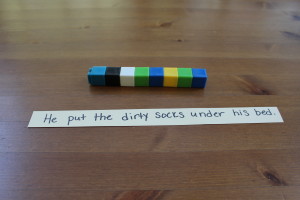
Putting it all together
This same idea can be used to illustrate compound sentences. Using two sentences with their corresponding cubes, you can show how two sentences can be put together using a conjunction.
You can illustrate how a pronoun takes the place of a noun. Locate pronouns in a sentence and determine what word the pronoun was referring to.
You can connect the subject or predicate. You can connect clauses. You can connect appositives. The list goes on and on. You can use the cubes to show so many different language patterns and parts!
Naturally, you will want to incorporate the things that you teach your child about grammar into their writing projects. When your child goes through the editing process in writing, have him or her look for grammatical errors. Help your child recognize the elements that you’ve taught with the linking cubes in his or her own writing. Can s/he use what was learned to improve his or her writing? You can also point out great examples of grammar usage in books and stories that you read together. Reading is continually essential in your child’s education. It is through reading that your child hears proper grammar.
Read, write, and link to better grammar. 
 (Click on the picture to see the link with tons of ideas for your kids!)
(Click on the picture to see the link with tons of ideas for your kids!)
